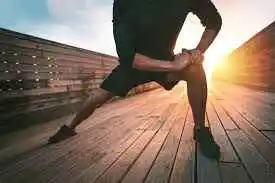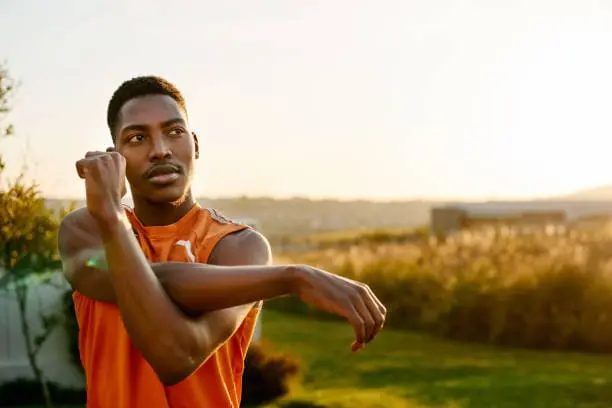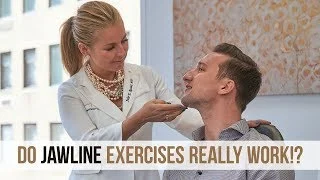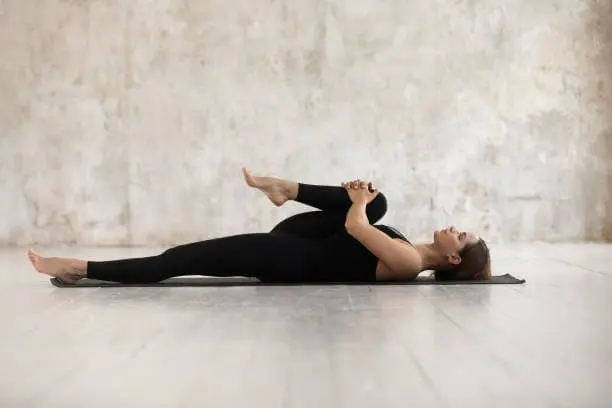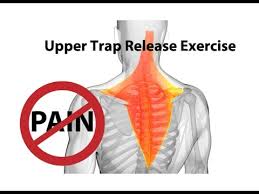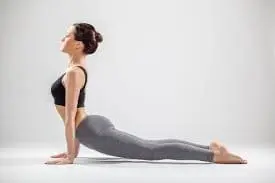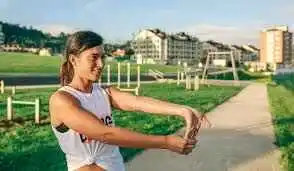15 Best Hip Adductor Muscles Strengthening Exercises
Adductor Muscles Strengthening Exercises is essential not only for athletes but also for individuals looking to improve overall lower body strength and stability. Incorporating specific exercises targeting the adductor muscles into your fitness routine can enhance athletic performance, reduce the risk of injury, and promote better functional movement patterns.
What are the workouts that strengthen the hip adductor muscles?
Hip adductor exercises use many tiny muscles (a set of hip adductor muscles) in the inner thigh that are important for bringing the thighs together, providing balance, and supporting and lining up the hips correctly. Most people may only think of practicing hip adductor exercises when they pass by the hip adductor machine in the gym, but we are here to change that.
Strengthening the hip adductor muscles is necessary for improving mobility and flexibility, increasing stability, and preventing leg injuries.
Being able to perform well in sports, keeping your mobility, and avoiding injuries as you age all depend on having strong hip abductor muscles. It is a major muscle group that supports hip strength and mobility. Since the adductors can be difficult to exercise properly, they usually get minimal attention in strength training.
What muscles are called the hip adductors?
The inner hip adductor muscles pull the legs toward the body’s center. Adduction is the term for this movement of drawing the legs inward. This muscle is also referred to as the thigh muscle.
The adductors, which are the inside thigh muscles, will contract when the patient squeezes his legs together.
The inner thighs contain a group of five muscles called the hip adductors. Adducting the hips or bringing the thighs together to the center of the body is the primary function of the hip adductor muscles.
The muscles that comprise the hip adductors are as follows:
The many anteriorly placed hip adductor muscles form this triangle muscle. Hip adduction of the hip joint is the primary action of the adductor longus. Additionally, this muscle helps with hip flexion and extension.
- Adductor Magnus
This muscle is shaped like a fan. The largest hip adductor muscle is this one. The adductor magnus supports both thigh extension and hip flexion.
- Adductor Brevis muscle
The adductor brevis, the shortest of the hip adductor muscles, is a triangular muscle that is positioned anterior to the adductor magnus and behind the adductor longus. The adductor brevis muscle’s primary function is to adduct the hip. This muscle is also important for hip flexion and may potentially be involved in external rotation.
- Pectineus
This is the hip joint’s short muscle. The thigh is flexed and adducted at the hip joint by this muscular movement.
- Gracilis
The gracilis is a superficial adductor muscle that is one of the weaker hip adductor muscles. The other adductor muscles are under it. The flexor and internal rotator muscles of the leg from the knee joint are activated by the gracilis muscle.
What Makes Hip Adductors and Hip Abductors Different?
Although having opposing roles in the body, many people may be confounded by the differences between the hip adductors and abductors. The thighs should be pulled together in the center of the body by the hip adductors, as previously mentioned, and opened away from the body by the hip abductor muscles.
The advantages of hip adductor exercises:
It’s a mistake that the hip adductors frequently get overlooked when it comes to strengthening activities. You run the risk of getting hip injuries if you don’t strengthen these muscles.
- Increased Hip Extension
For some of the larger compound movements, like deadlifts and squats, hip extension is important. Including hip adductor movements in your regular training program will improve your ability to lift weights, increase your athletic performance, and help with everyday tasks.
- Better Balance
This exercise improves your balance since it maintains your body’s upright position during sudden lateral movements. Unilateral hip adductor exercises are also recommended because they work the tiny muscles to improve balance.
- Increasing Rotational Power
Our bodies can generate more rotational power when our hip adductors are strong. Some games, such as baseball and tennis, demand the internal rotation of the hips, which requires speed and rotational power, both of which these adductor muscles partially supply.
- Lower the Chance of Injury
A common injury among athletes and even people in daily life is a hip strain. Tight or weak hip adductors are the cause of hip strain. You may lower your risk of suffering from this injury by stretching and strengthening your adductor muscles.
- Greater Stability and Balance
Including training for the hip adductor muscles in your daily physical activity will help you become more balanced and stable whether jogging, walking, or standing, as well as when engaging in sports or yoga.
- Better alignment of posture
Maintaining proper hip and pelvic alignment can help alleviate back and neck pain, and strengthening the adductor muscles of the hips contributes to better posture.
Best Hip Adductor Strengthening Exercises:
Lateral lunge
- Step into a standing position with your feet hip-width apart.
- Put your hands over your chest.
- Step forward and extend your left leg to the side.
- Every toe on both feet should point in the same direction when you position them flat on the floor.
- Keep your back straight, and flex your left knee, while taking a step forward.
- It should feel like you’re trying to get comfortable on a chair with only one side of your lower body supported.
- Hold this position for a few seconds.
- To get back to the starting position, push off with your left foot.
- Then return to your neutral position.
- Then relax.
- Repeat this exercise five to ten times.
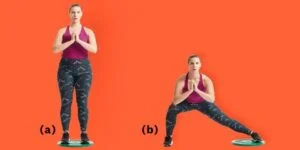
Seated banded adduction
- Start by wrapping a solid base with a resistance band, like a similar piece of equipment that is fixed to the ground.
- Position yourself on a weight bench so that the band and attachment point are on either side of your body.
- Grasp the band with your inner foot, placing it slightly on the knee.
- However, oppose the movement and allow the band to pull your leg toward the point of attachment.
- Hold this position for a few seconds.
- Contract your adductors to bring your leg back nearer your body’s midline.
- Then return to your neutral position.
- Then relax.
- Repeat this exercise five to ten times.
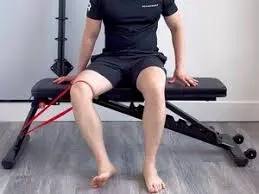
Standing banded adduction
- For this exercise, a resistance band is required.
- Wrap the band around a solid base.
- On either side of your body, you must face the resistance band and attach it.
- Pull your leg to the side as the resistance band takes it by resisting the movement.
- To begin this exercise, stand straight up and bring your banded leg to your midline until you feel your inner thighs tense strongly.
- Hold this position for a few seconds.
- Return your leg to the side slowly and carefully.
- Then return to your neutral position.
- Then relax.
- Repeat this exercise five to ten times.

Wide stance squat
- This exercise can be performed with your body weight alone or with several weighted tools, such as a barbell, kettlebell, dumbbell, or sandbag.
- You must turn your toes outside and stand slightly wider than shoulder-width apart to perform this exercise.
- Once your thighs are parallel to the ground, softly lower your hips by shifting your weight backward.
- Then, with your inner thigh muscles engaged, push through the ground to get back to the starting position.
- Then relax.
- Repeat this exercise five to ten times.

Seated Hip Adduction
- The seated hip adduction when you’re seated divides the hip adductor muscles, so all you have to focus on is pushing your thighs together.
- Place your back against the backrest of the machine as you sit.
- Adjust the knee pad width so that it provides a decent stretch for your inner thighs without overstretching your adductor muscles.
- To avoid going overboard, set up a lightweight for the first set.
- After you release the breath, push your thighs together until your knees meet in the middle of your body.
- Hold this position for a few seconds.
- Then return to your neutral position.
- Then relax.
- Repeat this exercise five to ten times.
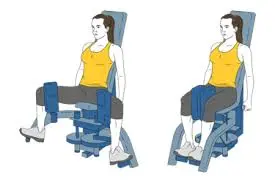
Cable hip adductor
- Select an attachment that you can fasten to your ankle in the direction that the pulley is closest to.
- Set the pulley so that it is level with the ankle calve.
- Place yourself beside the pulley.
- In a secure location where your fingers won’t get pinched, support yourself by placing your hand against the machine.
- Lift your leg that is actively used and face the pulley.
- The leg should be moved away from the pulley and toward your waist.
- Then return to your neutral position.
- Then relax.
- Repeat this exercise five to ten times.
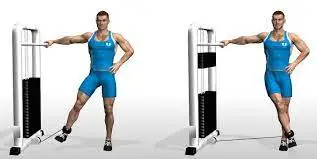
Standing Leg Circles
- Maintain a straight posture, placing your arms at your side and standing with your feet shoulder-width apart.
- Start turning one leg clockwise while maintaining the toes pointed at a height of about knee height.
- Exchange legs and repeat the process in reverse, turning counterclockwise.
- Then return to your neutral position.
- Then relax.
- Repeat this exercise five to ten times.
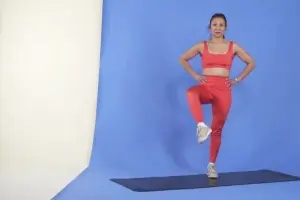
Side-Lying Hip Adduction
- With both legs straight, take a left-side position and lie down on the floor or a mat.
- Your right foot should be flat on the floor and your right knee should be facing the ceiling as you bend and cross your right leg over your left.
- Put your right hand on the ground in front of you and your left hand under your head.
- Maintaining a straight leg at all times, lift your left leg toward the ceiling.
- After a little period of time, carefully lower the left leg back down.
- Then return to your neutral position.
- Then relax.
- Repeat this exercise five to ten times.
- Once you’ve completed the required number of repetitions on the first side, switch to your opposite side and repeat the procedure with your other leg.
Side Kick Squat
- To keep the spine neutral during the exercise, begin standing and if needed support yourself with a pillar, wall, or tall chair.
- Lower yourself to squat level.
- Go for the greatest possible range of motion and contraction when you raise one leg straight to the side.
- Hold this position for a few seconds.
- Throughout this exercise, make sure that your leg or thigh remains in the frontal line by not moving forward or backward.
- During the exercise, make sure that your body does not twist to the side to maintain a level pelvis.
- Then return to your neutral position.
- Then relax.
- Repeat this exercise five to ten times.
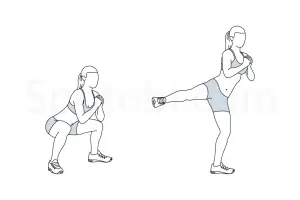
Standing side Leg Raise
- Place your hands on your hips or out in front of you to begin.
- Stand upright with your toes pointed front.
- Breathe in and move your weight to your left foot as you raise your right leg off the ground with the foot contracted.
- Hold this position for a few seconds.
- Bring the leg back down to meet the left as you release the breath.
- Then return to your neutral position.
- Then relax.
- Repeat this exercise five to ten times.
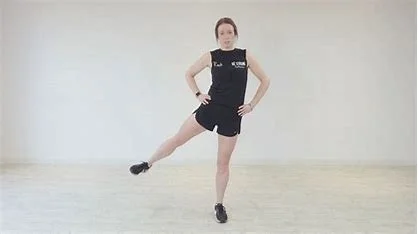
Cross Scissors
- You must sit down for this exercise and position your hands on the ground in front of you to strengthen yourself.
- Raise one leg off the ground in front of you and cross it over the other at an angle of between 30 and 40 degrees.
- Throughout the exercise, your core should be used to maintain a semi-V position as you extend your legs to the sides and then bring them back in while crossing your other leg over.
- Then return to your neutral position.
- Then relax.
- Repeat this exercise five to ten times.

Side Lunge with Dumbbells
- For this exercise, you need to position yourself with the dumbbells at chest height and your shoulders hip-width out.
- With your foot firmly placed on the ground, take a big step to your side and lower and return your hips until your thighs are parallel to the floor.
- Bring your foot back to the starting position by pushing through it.
- Then return to your neutral position.
- Then relax.
- Repeat this exercise five to ten times.
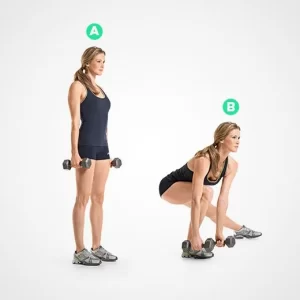
Cossack squat
- This workout requires you to lean your hips back and downward and to stand with your feet wide apart and your toes pointed outside.
- With your toes pointed upward and your heels on the floor, extend your other leg out and squat down to that one side to even out your weight.
- Hold this position for a few seconds.
- Return to the starting position by pushing through the ground with your flexed leg.
- Then relax.
- Repeat this exercise five to ten times.

Copenhagen Side Plank
- The individual must lie on the floor, parallel to the bench, and support himself using his elbows and forearms for this exercise.
- Raise your upper leg and place it on the bench by flexing your knee.
- As much as you can, hold onto this position.
- Then return to your neutral position.
- Then relax.
- Repeat this exercise five to ten times.

Plank jack sliders
- The starting posture is a plank, with the arms extended straight and the wrists directly below the shoulders.
- Moreover, the legs ought to be straight behind him.
- Verify that the patient is standing on one slider for each foot while still being on their toes.
- The distance between the feet is small.
- Spread the legs wide by sliding them out with the sliders in a single, planned, and smooth motion.
- Make sure that the individual is using their abdominal muscles to keep their body upright.
- The workout gets harder as the legs get wider.
- Move the feet so they are close together.
- Then return to your neutral position.
- Then relax.
- Repeat this exercise five to ten times.
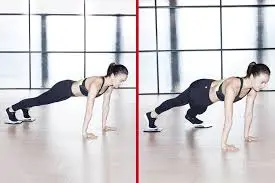
Training suggestions for adductor workouts:
There are a few important factors to take into thought when training the adductors to maximize the exercise’s positive effects and reduce the risk of harm.
- Increase the range of motion gently
It’s best to start your adduction workout with a limited range of motion to reduce your risk of damage. You can gradually increase the resistance and range of motion as you gain strength and experience to put additional strain on your muscles. This allows you to train without straining your adductor muscle.
- Warm up and stretch
Warming up before exercise is generally a good idea because it can help prevent injury by increasing internal body temperature and circulating blood to your muscles. To get their blood flowing, many people decide to begin with five to ten minutes of low-intensity exercise, such as walking on a treadmill or using an elliptical. This can be followed by stretching.
- Experience the contraction
While performing an exercise, going through the motions is one thing, but you’ll usually get better results if you concentrate on contracting the working muscle. By concentrating on the contracting muscle, a technique called mind-muscle connection may increase muscle activation and possibly improve the results of training. A strong mind-muscle link could be challenging for inexperienced individuals. For the optimum effects, it is therefore best to concentrate on moderate, controlled repetitions.
When did the patient stop performing this task?
- If there is a recent fracture to the lower leg bone.
- If rest is advised by the physical therapist the patient.
- If the patient has pain while performing this workout.
- If back and knee pain are already present in the patient.
Summary
Your inner thighs contain a key muscle group called the adductors, which help you move your legs toward the center of your body. Their main functions are to give stability during everyday tasks and to promote athletes’ explosive movements, such as jumping and running.
There are a few key considerations to make when completing adductor workouts to maximize performance and minimize the likelihood of injury. These include focusing on experiencing the contraction, warming up properly, and progressively extending the range of motion.
FAQ:
How can the doctor tell whether my hip adductors are weak?
Squats may also be a clear indicator of hip adductor weakness: “If the knees point outward during a squat, then there may be a hip strength imbalance with the hip adductors being weaker than the opposite hip muscles (hip abductors)”.
Why build up your hip adductors?
As adductors are necessary for hip stability and pelvic rotational control, these findings apply to sports other than “eliminating,” such as long-distance running, which demands strong hip and pelvic control.
Why do weak hip adductors happen?
Weak hip flexors can result from underusing the muscles or even from sitting for extended periods. Some conditions, such as osteoarthritis, can also result in muscle group weakness.
Can the adductors be strengthened by walking?
Not only does walking provide several health advantages, but it also works various muscles. Together with the hamstrings, calf muscles, and hip adductors, the quadriceps are the main muscles involved in walking.
What happens if the patient’s hip abductors are weak?
It is well-recognized that hip abductor weakness has a role in conditions like shin splints and foot hyperpronation (flat feet). Biomechanical collaborators understand foot hyperpronation and weak hip abductors. A weak gluteus medius puts more pressure on the foot’s inside, decreasing the foot’s natural arch.
Which Exercise Is Good For The Adductors?
Standing banded adduction
Copenhagen hip adduction
Seated banded adduction
Cossack squatLateral lunge
Side-lying adduction
How Can I Work Out at Home with My Adductors?
Whether or not you have any equipment will impact how you train the adductors at home. If so, don’t panic; there are lots of adductor exercises that you can perform without any equipment, like lateral lunges and wide-stance squats. There are countless ways to train your adductors at home if you own dumbbells or kettlebells.
Reference:
- 18 September 2023; Tirgar, P. Exercises to strengthen your hip adductors: Why and how do they help? A mobile clinic for physical therapy. Strengthening exercises for the hip adductors muscles can be found at https://mobilephysiotherapyclinic.in/.
- On July 28, 2023, Cpt., R. D. The Greatest Adductor Workouts for Increasing Hip Strength | Reviews of Garage Gyms. Reviews of Garage Gyms. Adductor Exercises: https://www.garagegymreviews.com/
- January 16, 2023: Prajapati, N. Exercises to strengthen the hip adductor muscles: advantages and how to perform? Physiotherapy Clinic in Samarpan. Hip-adductor muscle strengthening exercises can be found at https://samarpanphysioclinic.com/
- D. P. R. Cscs (2023, May 19). Hip Exercises to Strengthen the Adductor and Guard Against Injuries. Healthline. Bottom line: https://www.healthline.com/health/adductor-exercises
- Image 2, On March 11, 2023, Song, D. Rehab Hero. Rehab Hero: Assisted Banded Hip Adduction. Exercise: assisted banded hip adduction (https://www.rehabhero.ca/)
- Image 3, Nike Dunk SB Low – Sepcleat – Dunk Low Pro Sb Band Aid Light Flint Grey Bone 304292-006 (n.d.). 12731 at https://www.sepcleat.com
- Image 5, exercises, regimens, and routines – Seated hip adduction machine (n.d.). Exercises: seated hip adduction machine (https://www.workoutsprograms.com)
- Image 6, May 2023 saw the following: Izumi, S., Iwamoto, Y., Kawakami, W., Hashizume, T., Ota, M., Ishii, Y., Ozawa, J., & Takahashi, M. Hip adduction moment impulse during broader step-width gait is influenced by hip adduction angle. 103, 229–234, Gait & Posture. 10.1016/j.gaitpost.2023.05.024—https://doi.org
- Image 7, On January 13, 2023, Smith, J., and Nasm-Cpt, K. G. The Best Inner-Thigh Exercises That Reach Those Hard-to-Target Adductors. form. The greatest exercises for inner thighs ever found at https://www.shape.com/fitness/workouts
- Image 11, Skimble.com, n.d. Criss Cross Scissors. 6719-criss cross-scissors-how-to-do-exercise https://www.skimble.com
- Image 12, Side lunge and touch with a dumbbell. (June 13, 2019). The Health of Women. https://www.womenshealthmag.com/fitness/a20701574/side-lunge-and-touch dumbbell exercise 0
- Image 13, Falk (2022) 26 October. How to Increase Lower-Body Strength and Hip Mobility with a Cossack Squat. form. The cossack square is 6754969 on Shape.com
- Image 14, On January 10, 2022, Bonvechio, T. You’ll Never Try a Harder Side Plank. The Hardest Side Plank You’ll Ever Try: MyFitnessPal Blog [blog.myfitnesspal.com]
- Image 15, How to Mix Up Your Workout Using Core Sliders. (No date). Benefits of Using Core Slider for Abs: DMoose. https://www.dmoose.com/blogs/training/7

